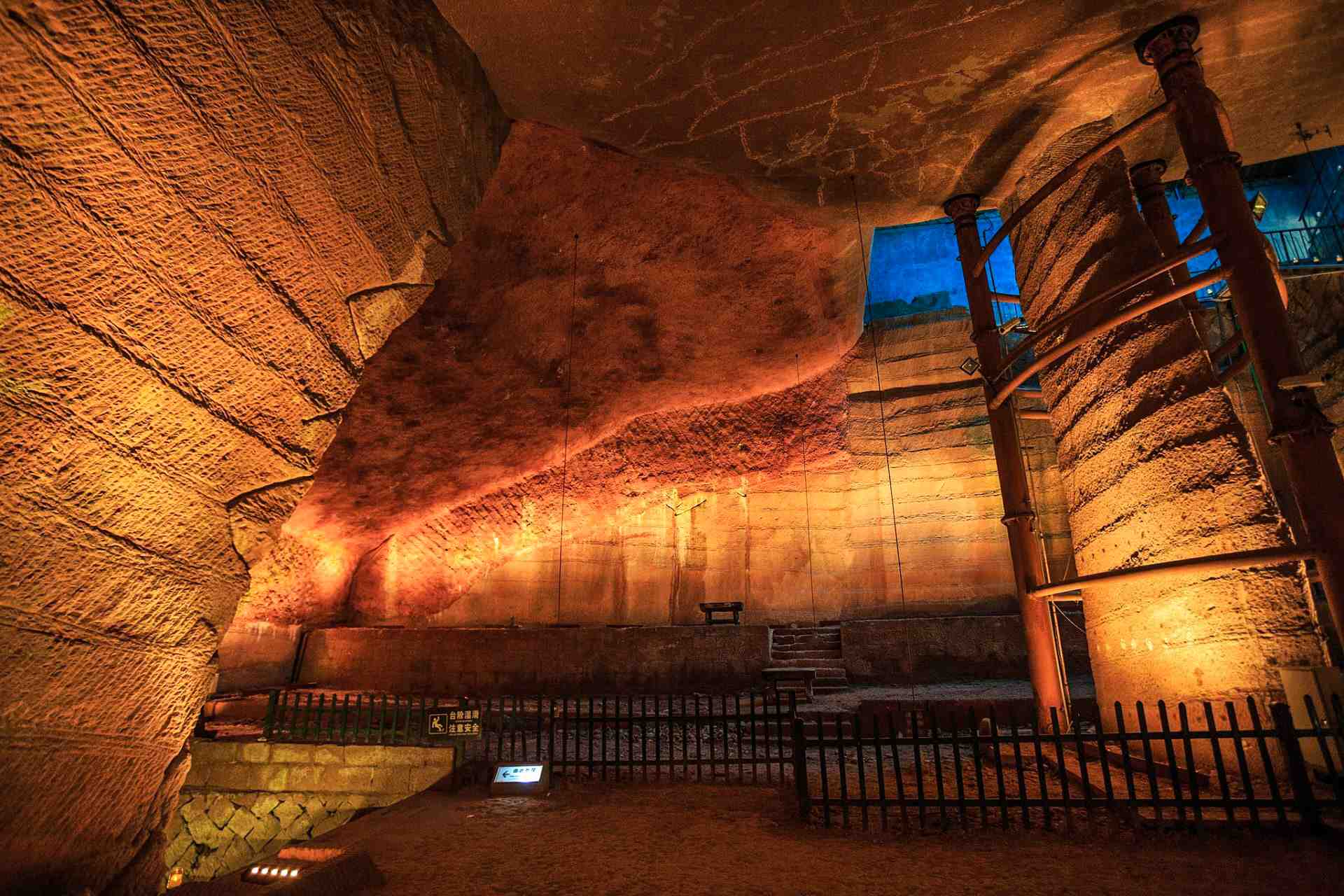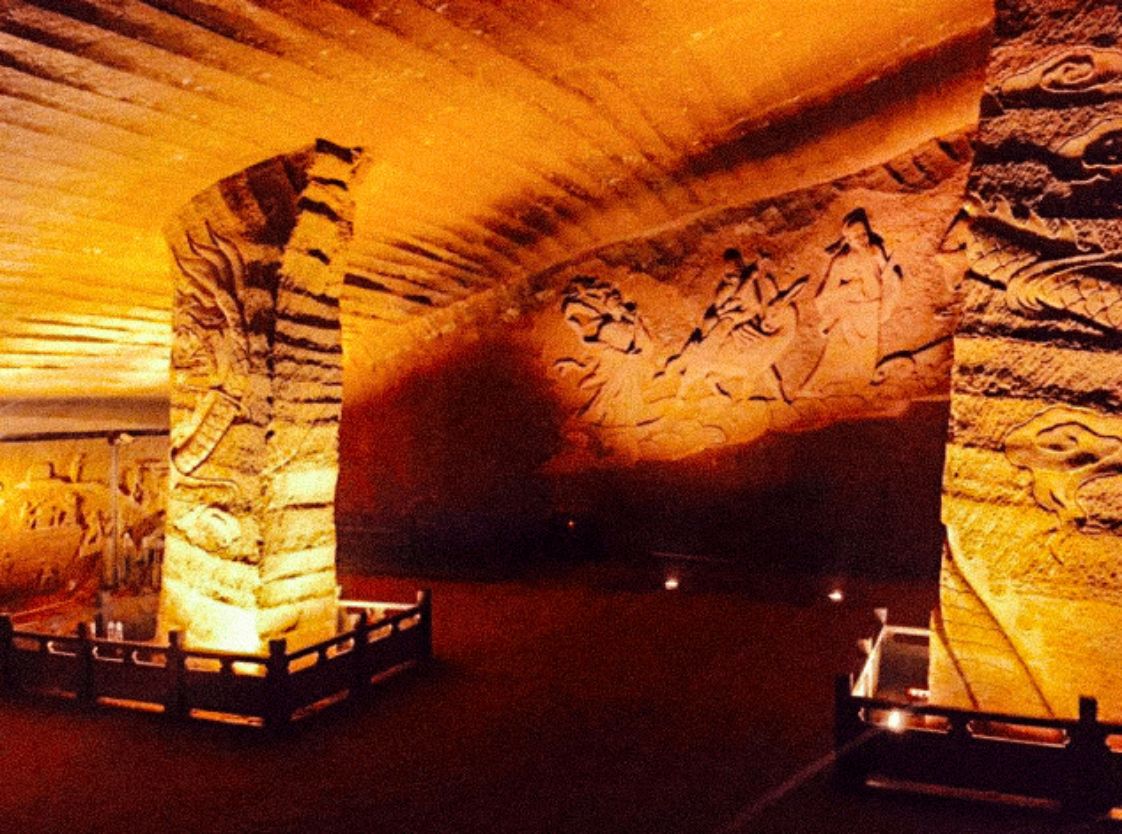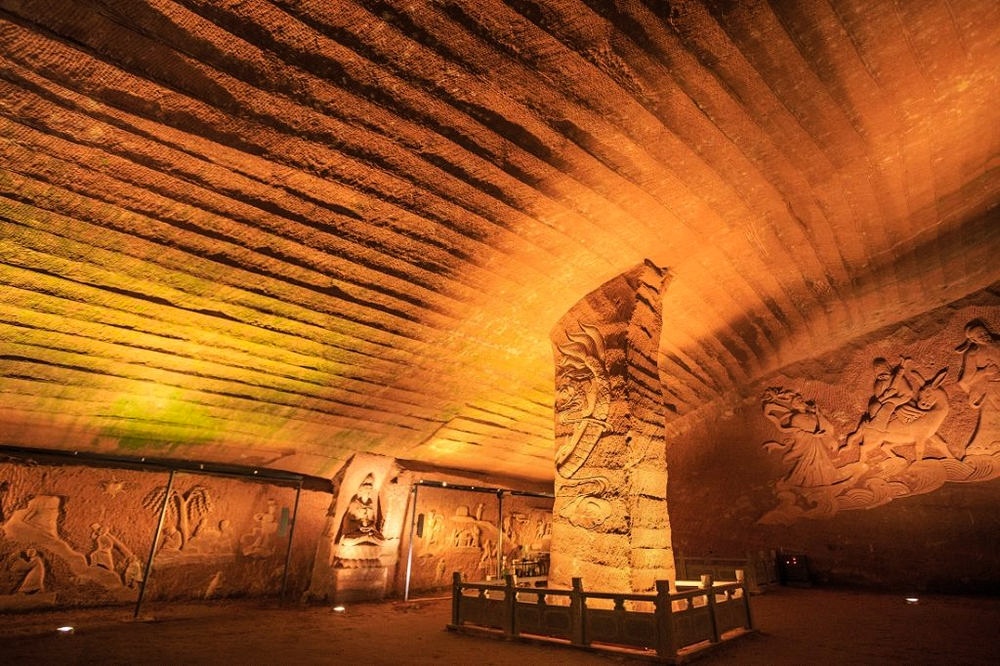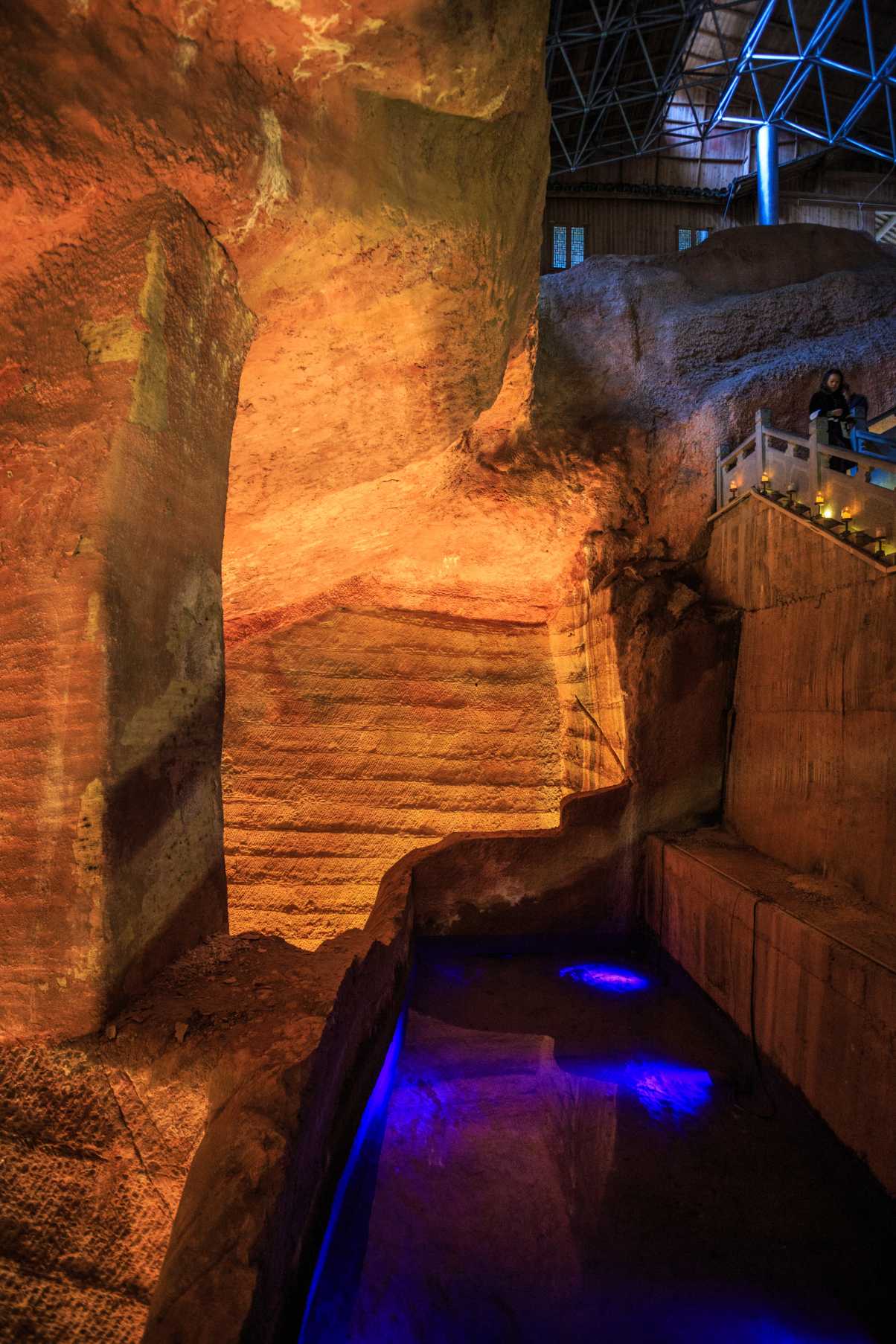The Longyou Caves are a series of large artificial sandstone caverns located at Phoenix Hill, close to the village of Shiyan Beicun by the Qu River, Lingyou County, in China’s Zhejiang Province.

The caves were discovered by local “farmers who were pumping water out of five small pools on a rough-flat ground in 1992.”
These caves have become a mystery to many people trying to figure out how builders in the distant past were able to carve out these gigantic caverns and leave such unique tool marks on the surface of their walls.
Scientists from around the world wonder how the caves have been able to keep their structural integrity for such a long time. And then there is the intriguing question of those tool marks.
What really makes these caves so mysterious and what is so special about their tool marks?

Modern-day high-tech machines dig away stone and grind down the walls and ceilings in mines and quarries. But when we discover the same types of tool marks in caves that date back far beyond the time of any formally recorded technology capable of even remotely producing any similar marks on stone surfaces, most of us can’t help but scratch our heads.
So, how did people in remote history manage to carve out these caverns leaving tool marks that only find their likeness in modern mining operations?

According to historians, the caves were built during the Qin Dynasty, in 212 BCE; however, there is no historical record of their construction.

Each cave has a volume of several thousand cubic meters. Apparently, the ancient builders did it all by hand, with hammers and chisels. But they didn’t chisel any simple way. The builders apparently chiseled the walls and ceilings in a way that left a uniform pattern, perfect to the nearest millimetre!
Specialists from China, Japan, Poland, Singapore, and the U.S. have shown interest in further researching the many intriguing questions the caves conjure up.
Some of the most challenging questions are:
- How did the caverns manage to hold their integrity for more than 2,000 years?
- Who created the caverns?
- What type of tools did they use?
- Why is there no mention of the caves in any historical records?
Do you think that the ancients really built the enormous Longyou Caves all by hands, with using only simple tools like hammers and chisels?




